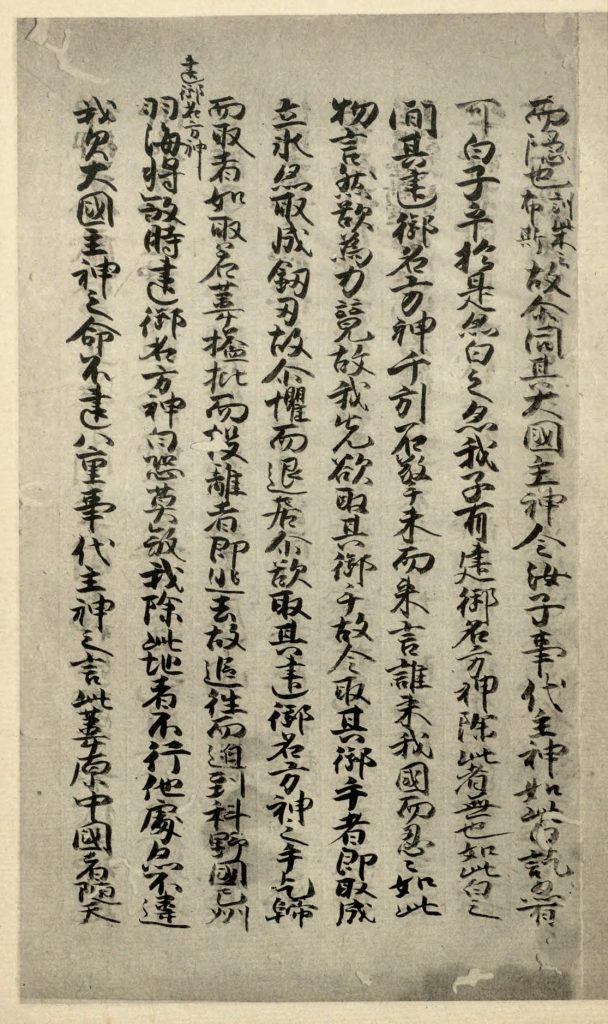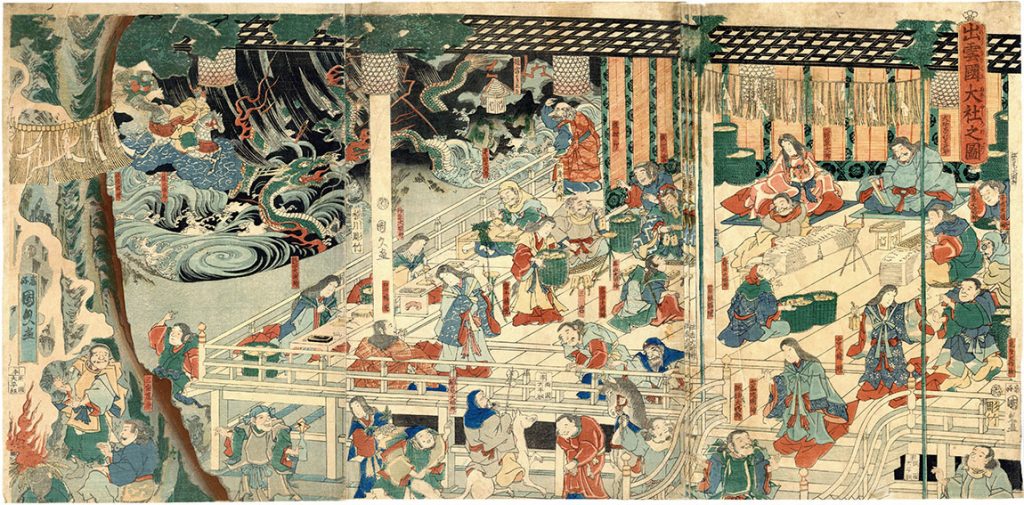The word “Kami” is often translated as “gods,” but this interpretation barely scratches the surface of its profound meaning. In Japanese culture, Kami represents a vast and intricate concept that no single English word can fully capture.
To uncover the true essence of Kami, let’s explore its origins through ancient Japanese myths, its representation in Kanji characters, and its connection to religion. Kami is not simply a deity to be worshiped but an integral part of the Japanese worldview—a force that shapes nature, life, and the spiritual realm.
“Kami” are the spirits, phenomena or “holy powers”. “Kami” is often taken to mean “gods” but the concept is more involved than that and no English word expresses its full meaning. They can be elements of the landscape, forces of nature, as well as beings and the qualities that these beings express; they can also be the spirits of venerated dead people. (ex. qualities of growth, fertility, and production; natural phenomena like wind and thunder; natural objects like the sun, mountains, rivers, trees, and rocks; some animals; and ancestral spirits.)
Wikipedia
“八百万神” (Ya-o-yorozu-no-Kami)– The Countless Spirits in All Things
In Japan, the idea of Kami is not limited to gods in the traditional sense but extends to countless entities and phenomena, from natural objects to abstract concepts. This belief is encapsulated in the phrase “八百万神 (Ya-o-yorozu-no-Kami),” which translates to “eight million gods.” The term “八百万 (Ya-o-yorozu)” symbolizes an uncountable multitude, reflecting the ancient Japanese belief that Kami exists everywhere.
This idea is documented in Japan’s oldest historical chronicle, Kojiki (A Record of Ancient Matters), compiled in 712. The Japanese people have long held the view that Kami reside in all things around them—trees, mountains, rivers, and even everyday object

Interestingly, this belief continues to influence modern Japanese culture. Many Japanese still embrace the idea that Kami or spirits inhabit all things, a perspective that fosters deep respect for nature and the material world.
Consider the famous folklore about Kami gatherings: once a year, all Kami are said to convene in Izumo to discuss the events of the coming year. This belief underscores the idea of interconnectedness among divine spirits and their influence on human life.

Decoding Kami Through Kanji
To better understand Kami, let’s analyze its representation in Kanji (Chinese characters). The Kanji for Kami, shown in its ancient form, first appeared around 660 BC in a Chinese historical text.
The character consists of two components:
- “示” (Shimesu): Represents an altar, symbolizing a connection to the divine.
- “申” (Shin): Represents a lightning strike, illustrating a force beyond human comprehension.

Together, these elements convey the idea of Kami as a powerful and mysterious force, one that transcends human knowledge and natural phenomena. To the ancients, Kami was a source of awe and reverence, akin to the unpredictable and overwhelming energy of a lightning strike.
Kami and Shinto – The Spirit of Nature and Life
Kami forms the heart of Shinto, Japan’s oldest spiritual tradition. Although debates persist about whether Shinto qualifies as a religion, its essence lies in the belief that Kami or spirits dwell in all things.
For Japan’s ancient agricultural societies, life was deeply intertwined with nature. Mild weather and fertile lands brought abundance, while droughts and storms posed existential threats. By recognizing Kami within these uncontrollable natural forces, early Japanese people sought harmony with nature. They prayed to Kami to mitigate disasters, secure bountiful harvests, and maintain the balance of their environment.
This reverence extended beyond nature to encompass life itself. The continuous cycle of life and creation was viewed as a divine force—Kami’s work in action. From this belief arose the idea of 八百万神 (Ya-o-yorozu-no-Kami): Kami of the sea, mountains, wind, food, and even daily necessities like shelter and clothing.
Shinto practices, rooted in gratitude and respect for Kami, celebrate the sacredness of life and the interconnectedness of all things. This profound worldview continues to shape Japanese culture and spirituality today.
The Eternal Relevance of Kami in Modern Life
The concept of Kami is not confined to history or mythology; it remains a vital part of modern Japanese identity. From annual shrine visits to everyday practices like offering gratitude before meals, Kami’s presence permeates daily life.
Even in an age dominated by technology, the idea that divine spirits dwell in nature fosters a unique sense of respect for the environment. This perspective encourages sustainability and mindfulness—values that resonate globally as humanity grapples with ecological challenges.
By understanding Kami, we gain insights into a worldview that cherishes the sacredness of all existence. It invites us to reflect on our relationship with nature, our sense of gratitude, and the deeper connections that bind us to the world around us.



Comment List